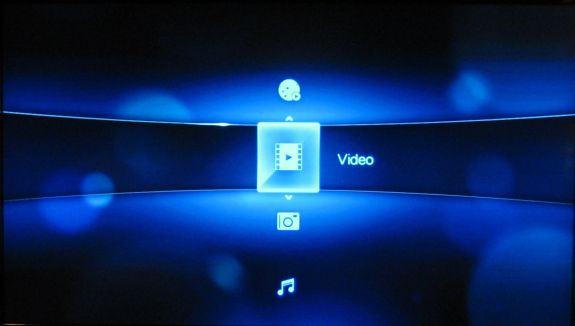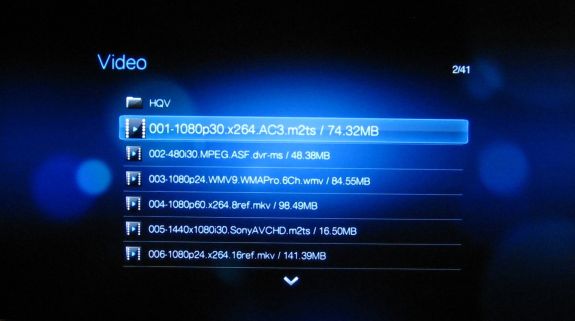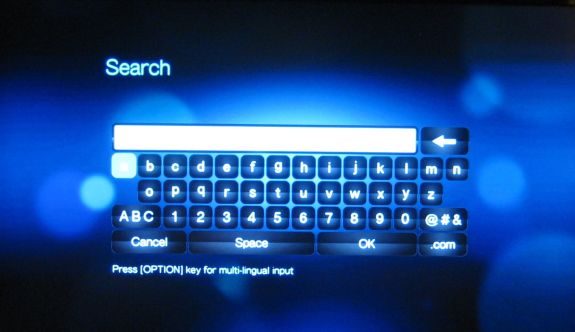WD TV Live Plus: Western Digital's Latest Media Player Reviewed
by Cameron Butterfield on July 29, 2010 1:00 AM EST- Posted in
- Home Theater
- Media Streamer
- WD
- WD TV Live Plus
The WD TV Live Plus is easy to setup, especially if you are utilizing the HDMI port that is capable of carrying all your audio and video signals at once over a single cable. Getting the WD TV Live Plus to lay flat after plugging in a heavy duty cable can be a bit of a challenge, as the weight and tension of the cable seems to make it flip to the side until you play with it for a while, but you can hardly blame WD for making such a slim and light device. However If you do purchase this device, you may want to invest in a roll of velcro or double sided tape to keep it in place.
Once seated and connected, the WD TV boots up quickly and you are provided with dark and light blue color scheme menu system that is very easily controled by using the arrow keys and a back, forward (OK) control scheme that is very reminiscent to the PSP, or PS3 menu system or Windows 7 Media Center. Western Digital did a good job of making the UI on this device familiar and easy to use for end users, they also have provided a screensaver mode that automatically blanks the screen and displays a WD logo in random areas.

When a USB device containing compatible media files is first inserted, the media library compilation process begins (if it is enabled), and media is sorted out into their respective media categories, namely Music, Video, or Photo. This feature allows you to use the search functionality rather than simply browsing around inside folders to find your media. In addition, the WD TV Live’s menu system provides file organization features as well, allowing you to move and copy your media and folders around on your connected storage devices. These are welcome features and gives the WD TV somewhat of a unique advantage over other media players that do not have these types of organizational features.
You can browse each of the sections (Video, Pictures and Music) using different viewing modes; thumbnails or list. The thumbnail view will show images for folders that have a FOLDER.JPG file within the folder, MP3 files with embedded artwork, photo files themselves, and mp4 files with user generated thumbnail images. This viewing mode works well for Music and Photos, but can be a troublesome viewing mode for videos. Since most videos do not have embedded images, the end result of viewing a folder full of videos is that you are unable to distinguish the videos from each other very easily, and when scrolling through the list of videos, the default thumbnail image is the same which creates a static visual effect where you can’t tell if you are actually scrolling through the video files or not. Sticking to the list or preview view on the video menu is recommended unless you are only viewing mp4 files that you have already generated the thumbnails for.


Western Digital also deserves some recognition for their efforts in providing a comprehensive manual for the WD TV Live Plus product. I was impressed with the level of detail and instruction on how to perform tasks on the device. Each step was outlined clearly with not only instructions but also many screenshots outlining each step and showing the action taking place on screen. This attention to detail makes a big difference in the user’s learning curve as it is much easier to translate screenshots into actual device usage rather than just text on a blank white page.










81 Comments
View All Comments
Glendixon - Tuesday, November 5, 2019 - link
Thanks for sharing, I am using Mobdro to watch my favorite shows.Visit here: https://mobdroplus.com/